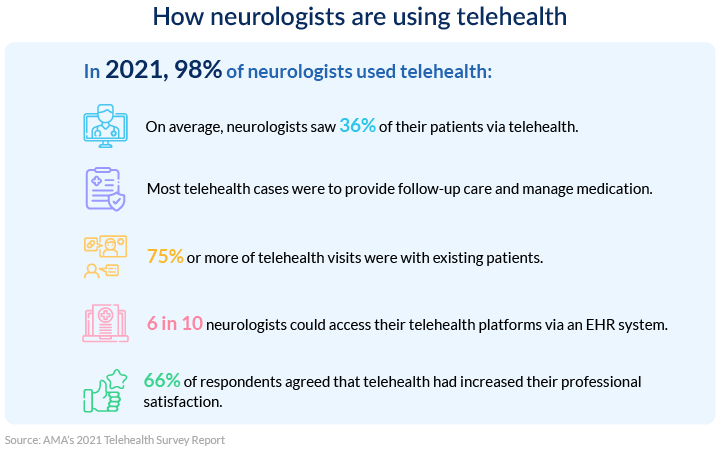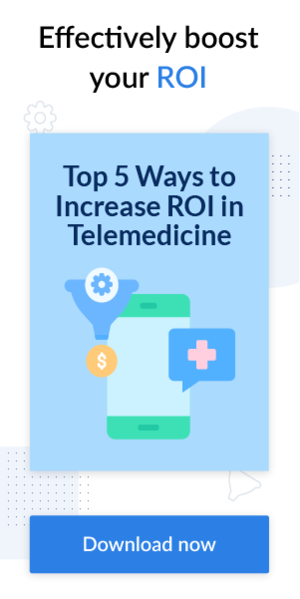Telehealth services assist many healthcare professionals, from primary care physicians to neurologists, endocrinologists, and others. Using telehealth, specialty care physicians can deliver high-quality virtual healthcare to different patient populations, regardless of geography or medical condition.
In this article, we look in-depth at:
- Issues with specialty care
- How telehealth software can help
- How telehealth solutions benefit various patient populations
- Telehealth benefits for specialty care providers
- Why healthcare providers in rural locations value telehealth
What are the barriers to specialty care?
Unequal access to healthcare is a considerable concern, caused by factors such as low income and long distances to healthcare facilities.
Physical, geographical, and financial barriers to getting the required specialty care worsen patient health outcomes, increase the risks of chronic disease complications, and affect patients’ overall quality of life.
For many patients to fully solve their health issues, a primary care physician should be the first but not the last specialist they turn to.
Family physicians should coordinate their work with healthcare providers from other specialties to whom they refer patients for precise diagnoses and accurate treatment plans. However, it can be complicated for primary care providers to monitor patients’ further steps, especially for those who live in remote areas, are older, or have reduced mobility.
Telehealth can address this challenge, allowing for improved access to specialty care and better coordination among medical specialists.
How telemedicine can become a lifesaver
Virtual technologies offer patients access to a broad range of healthcare services, especially for the 79% of Americans who live in remote areas.
Telehealth software and electronic medical records allow healthcare providers instant access to patient health data and appointment histories. Using this software, physicians can store, view, and share lab results, prescribed medications, X-ray images, and other vital information with different clinical specialists online at the push of a button.
Telemedicine ensures alignment among healthcare specialists involved in the patient treatment process.
Did you know that telemedicine offers three main options for healthcare delivery? Each has its advantages, which we reveal in our article on the main types of telemedicine.
Telemedicine benefits for various patient populations
Telehealth can make the treatment process more convenient and less expensive for everything from follow-up appointments and quick health checks to consultations to discuss lab tests without wasting patients’ time and money on traveling to a clinic.
Patients living in remote areas
People in rural areas typically lack sufficient access to specialized care. Telehealth solutions can reduce disparities in medical care access for patients in different geographic areas.

People with mental illnesses
With the rise of mental and behavioral health issues such as anxiety and depression, there has been great demand for mental health specialists over the last few years.
Telehealth allows more people to get psychological support on time and at lower cost.
Geriatric patients
Older adults typically have more chronic health conditions and need special treatment at home.
Telehealth enables continuous access to specialty care providers without the need to leave the house.
Pregnant women
Telehealth allows pregnant women to have regular check-ins with their gynecologist to minimize clinic visits and the risk of catching an infection in public places such as hospitals.
Benefits of telehealth for specialty care providers
Specialty care physicians can provide more valuable and personalized healthcare services to patients by using telehealth solutions. Let’s see how specialty care providers can use telehealth to increase patient engagement.
Primary care physicians
Primary care practitioners usually have a lot of follow-up appointments with patients. Before virtual technologies came into play, such follow-up visits were provided face to face, resulting in lower patient attendance rates.
Patient phone calls to a family doctor after work hours were common and weren’t reimbursable. With the adoption of telehealth, a patient consultation over the phone can be reimbursed the same way as an in-person appointment. Let’s see how else family physicians can use virtual visits to facilitate their healthcare practices:
- Provide follow-up appointments
- Provide frequent check-ups to monitor patients’ chronic health conditions, such as diabetes, hypertension, and obesity
- Evaluate and discuss lab test results and screenings
- Adjust treatment plans and therapy goals
Pediatrics
Many low-risk children’s health conditions can be evaluated remotely by a pediatrician with the help of diagnostic supplies such as specific cameras, otoscopes, stethoscopes, scales, reflex hammers, thermometers, and pulse oximeters. Remote monitoring helps to prevent illness and reduces the likelihood that a disease will develop into something serious.
Mental health specialists
Telehealth allows people to get psychological support in the comfort of their home, making them feel at ease and confident during the consultation. Virtual therapy gives patients more privacy than in-office sessions. Patients no longer have to fear being seen by clinic personnel.
By using telehealth software, mental health specialists have more possibilities to support patients with physical disabilities, post-traumatic stress disorder, dementia, autism, and other psychological disorders that might not let patients leave their homes.
You may offer your patients a broad spectrum of virtual therapy services, from a quick talk about anxiety and panic attacks to expanded therapy sessions.
Cardiology
Cardiologists use electronic devices to gather patient measurements in real time in order to track health conditions at a distance, such as:
- Blood pressure
- Pulse
- Body temperature
- Respiration rate
- Daily body weight
- And more
Cardiologists were among the first healthcare specialists to grasp the benefits of digital technologies. In addition to using telehealth software, cardiologists can obtain data from electronic devices through a transmitter, use that data for planning patient care, and transfer it to other healthcare specialists in order to provide comprehensive treatment.
For example, cardiologists can monitor patients with hypertension through constant remote blood pressure monitoring and can provide timely advice on adjustments to a patient’s lifestyle, diet, or medications.
Dermatology
Remote diagnosis of skin conditions can be no less effective than diagnosis during a face to face appointment with a dermatologist. Here’s why.
Patients can take images of their skin conditions, such as red spots, and securely transfer them to their dermatologist using telehealth software.
In cooperation with other specialists, dermatologists can make accurate diagnoses and provide quality treatment or give a consultation immediately without having a patient wait a long time for their appointment.
Gastroenterology
Patients with chronic digestive disorders often skip regular check-ups and show high non-adherence rates, leading to decreased quality of life and worsening conditions.
Virtual appointments have proven efficient for ongoing patient care and managing digestive diseases with the help of remote health monitoring tools and frequent check-ins.
Many digestive problems have similar symptoms or even can be asymptomatic for some time. Telehealth allows gastroenterologists to monitor patient conditions in a timely manner, adjust medication and dietary regimens, and keep track of disorder progress or any side effects.
Gastroenterologists can remotely treat common digestive disorders that require frequent check-ups, such as chronic pancreatitis, Crohn’s disease, and irritable bowel syndrome (IBS), through virtual appointments when all required lab and imaging results are shared by a patient.
Neurology
Telehealth programs significantly help people with Parkinson’s disease, people with movement disorders, and homebound people by allowing a neurologist to remotely observe physical conditions.

During a video-based appointment, a neurologist can instruct a patient on how to perform a self-examination (such as examining a hand), discuss lab results or MRIs, and prescribe appropriate medications.

Telehealth advantages for healthcare providers in rural areas
In rural communities, communication gaps may exist between healthcare providers in different specialities. Telehealth software allows medical specialists to stay in touch through convenient video conferencing and online messaging. Here are some ways in which telehealth technology benefits physicians in rural areas:
Remote patient monitoring
With remote patient monitoring, healthcare providers can access patient health data such as blood pressure, heart rate, and blood sugar level online and remotely treat patients. For example, family physicians can easily share patient medical data with specialists for better patient diagnosis and treatment.
Chronic health condition management
Patients with chronic health conditions require more regular check-ups with physicians. Telehealth solutions allow physicians to continuously monitor patients’ health measurements and vital signs, improving patient health outcomes, treatment quality, and the precision of care plans.

More accessible medical staff training and support
Instead of traveling long distances to receive education, remote medical staff can use videoconferencing to receive quality support and training through distance learning.
Conclusion
Using telehealth software, medical specialists can maintain continuous and patient-centered care. Patients can be treated anywhere and at any convenient time without long wait times and geographical boundaries.
Furthermore, healthcare providers who live and practice in rural regions can receive efficient education and training online and can cooperate with other healthcare professionals from different specialties and geographies.
The right telemedicine software makes this easier.
Request a free demo to see how you can provide quality treatment, adhere to HIPAA requirements, and enrich your medical expertise using ExpertBox.
FAQ
-
- Telehealth solutions can reduce disparities in medical care access.
- Telehealth allows more people to get psychological support on time and at lower cost.
- Telehealth enables older people to get continuous access to specialty care providers without the need to leave their home.
- Telehealth allows pregnant women to have regular check-ups with their gynecologist to minimize clinic visits.
-
Family physicians can use virtual visits to facilitate their healthcare practice by:
- Providing follow-up appointments
- Providing frequent check-ups to monitor patients’ chronic health conditions, such as diabetes, hypertension, and obesity
- Evaluating and discussing lab tests and screenings
- Adjusting treatment plans and therapy goals
-
Here are some ways in which telehealth technology benefits physicians in rural areas:
- Remote patient monitoring. With remote patient monitoring, healthcare providers can access patient health data online, such as blood pressure, heart rate, and blood sugar level, and can remotely treat patients.
- Chronic health conditions management. Telehealth solutions allow physicians to continuously monitor patients’ health measurements and vital signs, improving patient health outcomes, treatment quality, and care plans.
- More accessible medical staff training and support. Remote medical staff can use videoconferencing to receive quality support and training through distance learning.




